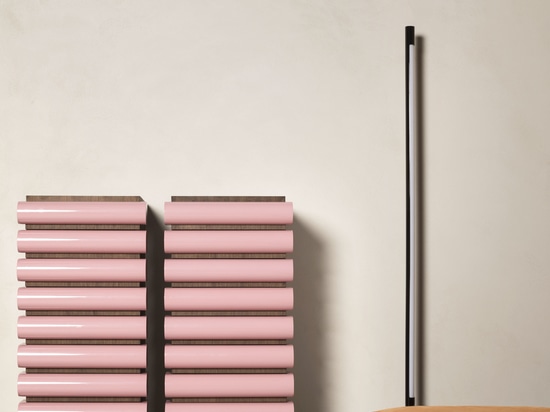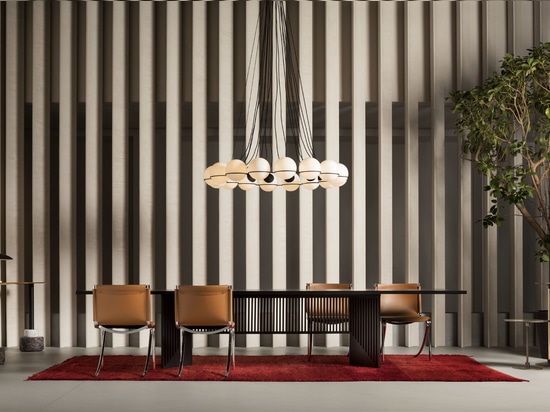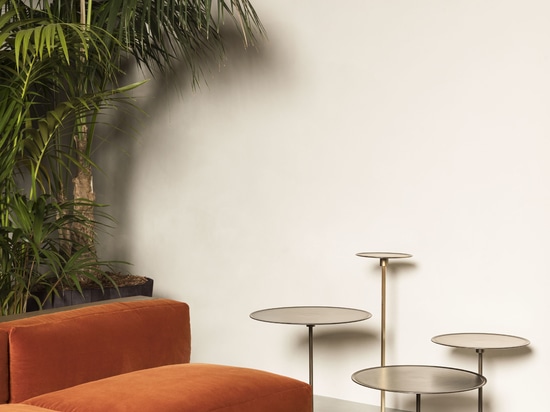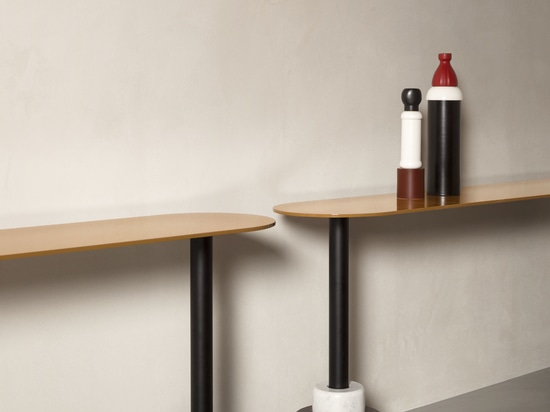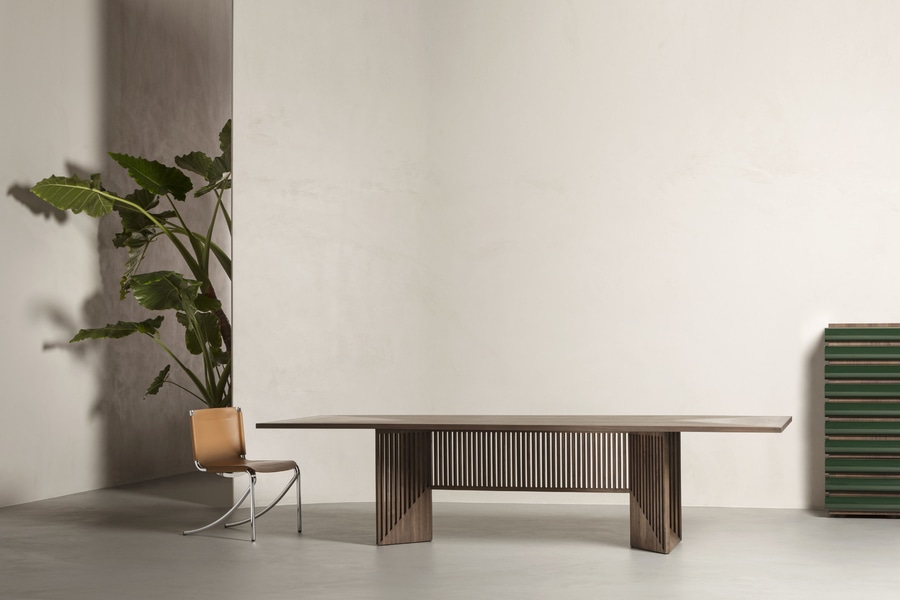
#Industry News
Francesco Meda and David Lopez Quincoces Reinterpret Acerbis Icons
Seven archive creations by the trailblazing talents who made the history of Italian design
Acerbis introduces a selection of archive creations by the trailblazing talents who made the history of Italian design - Nanda Vigo, Gianfranco Frattini, Giotto Stoppino, Roberto Monsani, Lodovico Acerbis - now reinterpreted for the contemporary era by creative directors Francesco Meda and David Lopez Quincoces, who have imbued the works with an invigorated emphasis on the brand’s signature lacquers, along with the strength of materials, potent new proportions, and high-geared colors inspired by vintage racecars.
Storet chest of drawers, Nanda Vigo 1994
A playful, spirited pillar of drawers, the Storet cabinet epitomizes the visionary touch of Nanda Vigo’s designs, now modernized with a brightly lacquered wood contrast and brand new proportions. In both its elongated vertical edition, and in the nightstand designed by Vigo but manufactured for the first time only now, the Storet reflects today’s advances in production, with the walnut’s visible grain illuminating Acerbis’s modern expertise in utilizing extensive wood surfaces. The cabinet, though made entirely of a single material, creates a potent game of colorplay, tempered by the pacifying shades and the natural quality of the wood.
Maestro table, Gianfranco Frattini, 1997
With the precision and vivid identity that Gianfranco Frattini imbued in his work, the Maestro table was designed to conjure. function and perfection in living spaces. Today, at versions in 2,5, 3 and 3.5 meters in length, it becomes grander in its scale for modern entertaining needs, and more dramatic in its material impact, with black ash wood and dark stained walnut making dark silhouettes of the long, cantilevered wings of the table and its linear play of cutouts that recalls traditional Japanese architecture.
Gong side table, Gianfranco Frattini, 1987
Emblematic of the rigorous designs of Gianfranco Frattini, the Gong side table reemerges with his quintessential grace and flair of form, now in diverse heights and diameters — a family of proportions for sculptures, plants, and other decor. In a muted brushed finish of brass or gunmetal, the metals present a new emphasis on materiality, with a column in the same colour or contrasting in brass, and a tabletop and base in iron, all in gleaming, elemental purity.
Life sofa, Roberto Monsani, 1974
In envisioning new styles of living, Roberto Monsani imagined solutions to reshape the home, and the Life couch — so avant-garde it was never produced in series in Monsani’s day — retains its modern edge. Maintaining its modular and flexible design, today the sofa’s original lucite frame has been elongated and updated with versions in dark stained walnut and black ash for contemporary living ideals. Designed to invite casual lounging, the supremely comfortable down cushions are now rendered ever more inviting in velvet, with softened shapes for absolute ease.
Menhir low table, Giotto Stoppino, Lodovico Acerbis 1983
With a daring approach to materials, the Menhir low table becomes a composition of colors and textures that eloquently illustrate the sculptural simplicity of Lodovico Acerbis and Giotto Stoppino’s inventions of new forms. With a Greek-like classicism, the table’s column connects the monumental marble base, matte in its contemporary version, to a tabletop newly rendered in lacquered wood or black ash wood and natural walnut, creating a striking exchange between colors and elements. Newly conceived in three different heights, the Menhir low table vaunts a more dramatically-sized round top, and now appears as a tall console as well — a concept from the original designs today in production for the first time.
Jot chair, Giotto Stoppino, 1976
Celebrating stainless steel in the Bauhaus tradition, the tubular chrome-framed Jot chair takes its swooping, balletic form into the contemporary era with a new version purified of any paint or dye that would hide the essence of its powerful metal and rawhide leather elements. An iconic example of Giotto Stoppino’s masterful use of cantilevered chair styles and his exploratory method with materials.
Sheraton sideboard, Giotto Stoppino & Lodovico Acerbis, 1977
Reflecting Giotto Stoppino and Lodovico Acerbis’s role as a leading Exponent of modern Italian design, the Sheraton sideboard combines a sleekly groundbreaking shape with innovative functionality. The winner of the Compasso d’Oro in 1979, the seminal design forms part of the permanent collection at London’s Victoria and Albert Museum, and today sees new editions of the wood cabinet finished with Acerbis’s distinctive glossy lacquers in six new contemporary tones. The Sheraton’s original closures and sliding system — a revelation upon its initial release — have been further modernized to ensure a smoother gliding.
